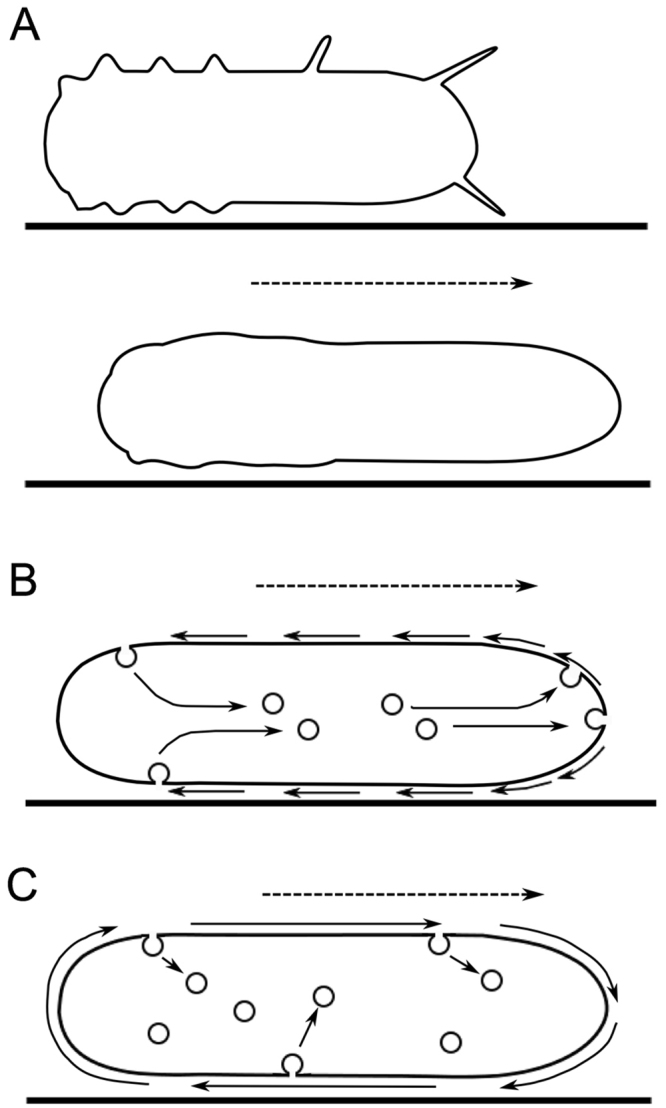Figure 1.

Three models for the behavior of the cell membrane during cell migration. In a membrane unfolding model (A), the cell changes its shape during migration by alternating between folding (upper panel in A) and unfolding (lower panel in A) the cell membrane. The folded surface appears as projections and wrinkles on the cell surface and is utilized as a membrane reservoir. In the fountain flow model (B), both the dorsal and the ventral membrane flow toward the rear of a migrating cell; membrane precursor vesicles fuse with the anterior cell membrane to supply membrane (exocytosis), and membrane is taken up at the rear (endocytosis). In the caterpillar flow model (C), the cell membrane moves circularly in the order of the ventral, anterior, dorsal, and rear regions. In this case, the cell membrane may turn over everywhere. The dotted arrows show the direction of cell migration. The solid arrows indicate the direction of trafficking and membrane flow.
